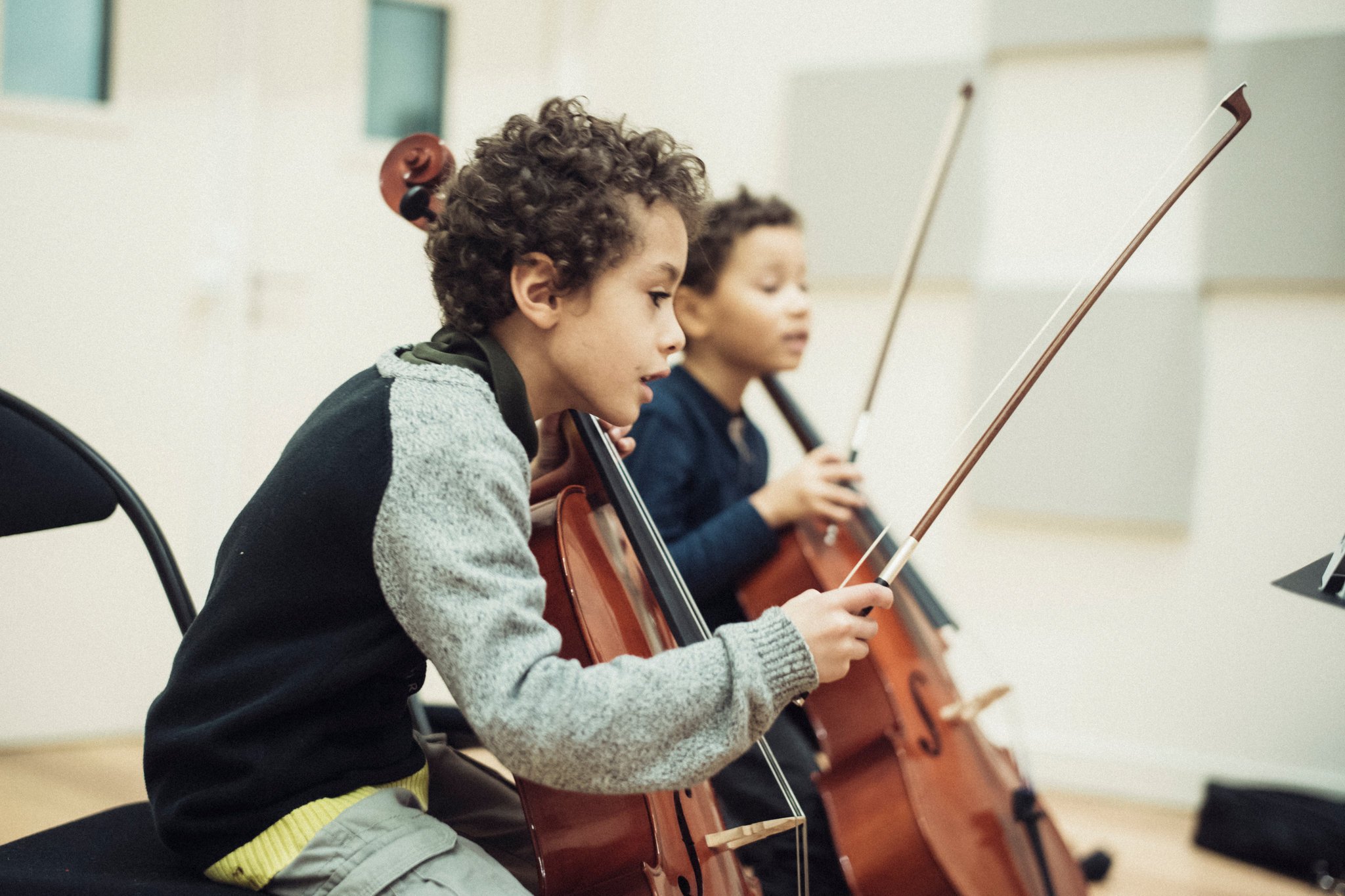Can Philippe Jaroussky Help Fix Classical Music’s Diversity Problem?
Βy Elian Peltier
Boulogne-Billancourt, France — On a recent afternoon, the French countertenor Philippe Jaroussky greeted the parents of children who had enrolled in a music academy he founded a few months earlier here on the outskirts of Paris. The guests were about to attend one of their first concerts of classical music.
One of the children was Amine Jerbi, the cheerful and jocular 7-year-old son of Tunisians who tore around the room, clapping his hands.
“If we manage to calm Amine down through music, it will be a huge victory,” Mr. Jaroussky said, referring to the child’s attention deficit hyperactivity disorder.
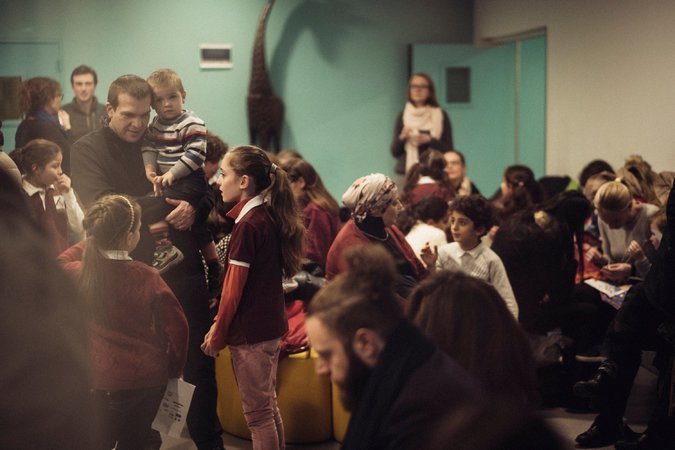
Young students at the Académie Musicale Philippe Jaroussky and their relatives waiting for a concert to begin last month. Credit Julien Mignot for The New York Times
The new academy is rooted in the need for more diversity in classical music, both onstage and in the audience, he explained. As the audience for classical music ages and fewer young people embrace it across Europe and the United States, the genre is facing a serious challenge to renew its devotees, let alone to fill its venues.
Mr. Jaroussky hopes to change that, beginning on a small scale. His new institute, the Académie Musicale Philippe Jaroussky, provides free weekly music lessons to 23 children from working-class or immigrant backgrounds.
Half of those who attend classical music concerts in France are executives or managers, and their average age is 54, according to a 2015 study commissioned by the French Association of Orchestras.
“Whether in Hamburg, in New York or in Paris, I sing before the same kind of people,” Mr. Jaroussky said in an interview. “And as much as I love my audience, I’m worried that if we don’t bring more diversity onto the stage, we won’t get a younger and more diverse audience either.”
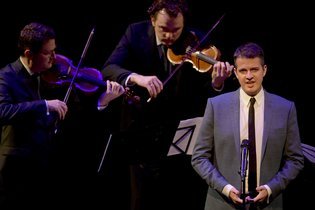
The French countertenor Philippe Jaroussky, right, performing at the Volksbühne in Berlin this month. Credit Clemens Bilan/European Pressphoto Agency
The children in the academy, ages 7 to 12, were given the choice of learning the piano, violin or cello, and receive instruments to keep throughout the three-year program.
Yassine Souhir, a 7-year-old violin player whose favorite artists are Rihanna and the French rapper Maître Gims, said he enjoyed listening to Vivaldi’s “Four Seasons” on YouTube; Macéo Mennesson-Lorrente, also 7, said he was drawn to the cello when he realized that he could feel the vibrations of the instrument in his chest.
And Amine, who lives with a foster family, picked up the cello after he discovered 2Cellos, a pair of Croatian cellists who perform pop and rock, in a genre known as “classical crossover.”
His music lessons must fit into an already busy schedule that includes weekly sessions with psychologists and speech therapists. Amine has started singing at home and his sleep troubles have stopped since he began playing the cello, his foster mother said.

Amine and his foster mother, Marie-Christine Gérardin, at their home in Boulogne-Billancourt. Credit Julien Mignot for The New York Times
“He likes to clown around, but he calms down as soon as he puts his cello in his hands,” said Marie-Christine Gérardin, a retired factory worker who has raised Amine since he was 18 months old.
Mr. Jaroussky said his academy was inspired by ambitious initiatives such as El Sistema, a program founded in 1975 that has provided hundreds of thousands of Venezuelan children with a music education, and the Demos project in France.
Started in 2010 and coordinated by the Philharmonie de Paris, Demos now has 30 orchestras throughout the country, each with more than 100 children from working-class backgrounds. Roughly 4,500 children have benefited from Demos’s free three-year program since it began, and half enrolled in additional music classes after completing the program, according to its co-founder and current leader, Gilles Delebarre.
“When children get used to a cultural habit at a young age, they keep it,” he said.
Critics of such programs argue that while initiatives that reach a few thousand people yield positive if limited results, more should be invested in music education in schools or “conservatoires,” or public music academies.
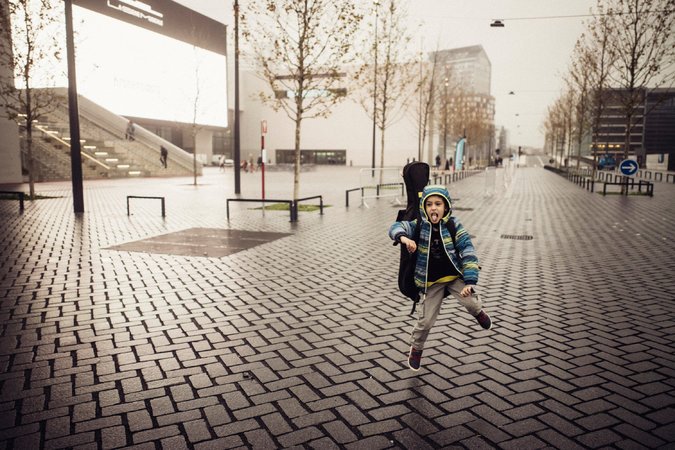
Amine outside la Seine Musicale, the performing arts center west of Paris where Philippe Jaroussky’s music academy is based. Credit Julien Mignot for The New York Times
Stéphane Dorin, a sociology professor at the University of Limoges in France who studies evolving tastes in music, said that projects such as Demos or Jaroussky’s academy were too expensive to roll out more widely. This year, the Demos project has a budget of 7.8 million euros, or $9.5 million, for 3,000 children, according to Mr. Delebarre.
Such programs “won’t transform in depth the relationship that kids from working classes have with classical music,” Mr. Dorin said. But he praised the recent announcement by the ministers of education and culture that all of France’s primary and middle schools would have choirs in the next two years. If fully implemented, the €20 million plan could reach more than 10 million children every year.
It was at school that Mr. Jaroussky fell in love with music. He grew up in the Paris suburb of Sartrouville, in a middle-class family — “neither rich nor poor, with no musicians at home” — he says, but his music teacher encouraged his parents to enroll him at the local conservatoire.
From age 10 to 22, he played the violin, and he started playing the piano when he was 15. He began singing at 18, and made his professional singing debut at 21.
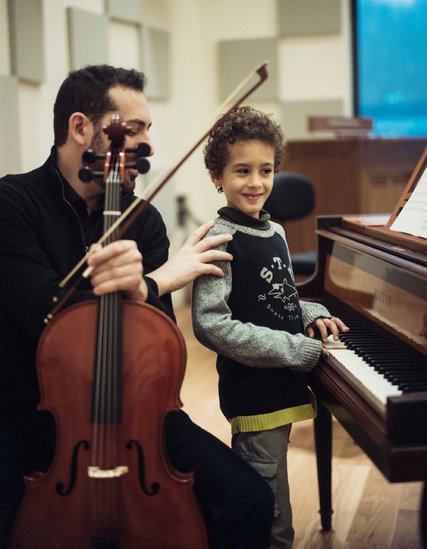
Amine with his cello teacher, Pierre Charles, during a lesson last month. Credit Julien Mignot for The New York Times
Now 39 and with a global career, Mr. Jaroussky describes wanting to use his fame to encourage private sponsors to support his academy, a practice that is much less common in France than in countries like the United States.
Three-quarters of the academy’s annual budget of €500,000 comes from private institutions and donors. Mr. Jaroussky wants to train 100 young musicians over the next three years, and to set up satellite academies in the cities of Lille and Marseille.
The academy also offers free master classes for professional musicians and singers ages 18 to 25, some taught by Mr. Jaroussky himself, as well as free concerts for the children it trains and their parents. In France, 12 percent of those who attend classical concerts do so under the influence of their children, according to the 2015 study by the French Association of Orchestras, and the academy has sought to encourage parents to follow their children’s progress.
Back at the academy, the auditorium was filling up. There were children running around, and impressed parents and a few other music lovers were filing in to hear the young professionals of the academy give their winter concert.
Mr. Jaroussky took his place in the front row. Near him, Amine sat restlessly, moving on his seat and playing with a water bottle. But halfway through the concert, as a trio performed Sergei Rachmaninoff’s “Trio Élégiaque No. 1,” Amine calmed down.
“These sounds, they’re so beautiful,” he whispered, eyes wide and mouth ajar. “Maybe I’ll try to play like them at home.”
An earlier version of a picture caption with this article misspelled the surname of a young musician shown. As the article noted, the child is Amine Jerbi — not Djerby.
Main photo: Amine Jerbi, left, and Macéo Mennesson-Llorente during a cello lesson last month at the music academy that Philippe Jaroussky opened outside Paris.
